The Little Green Sheep baby bedding buying guide is the perfect place to start if you're looking for the best baby bedding for your little one. We have years of experience in the baby industry and know exactly what you need to keep your baby safe, comfortable, and stylish!
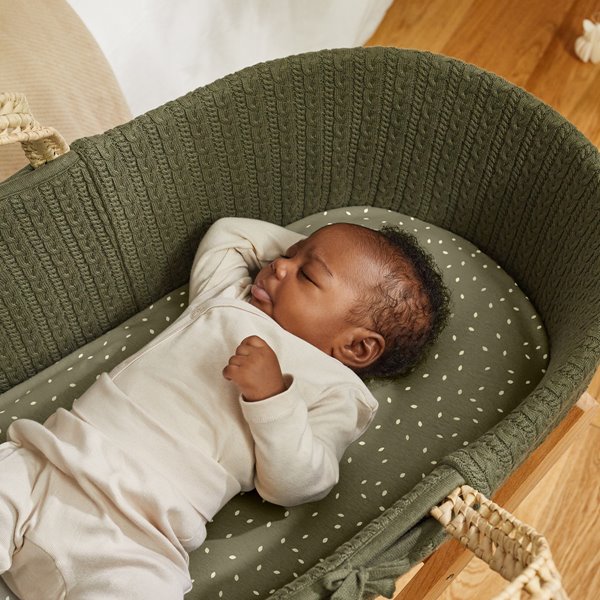
Choosing the right bedding for your little one can be tricky, but we’re here to help. Our guide includes everything you need to know about baby bedding, from what to look for when choosing the perfect bedding for your baby to how to care for it.
From organic bed sheets, blankets, and pillows to baby sleeping bags and mattress protectors, we have everything you need to ensure your baby has a good night's sleep. We also have a range of beautiful cot bed duvets featuring zero man-made fibres, perfect for your baby's nursery.
If you have any questions about our baby bedding buying guide, please contact us, and we will be happy to help.
There are several items that should be seen as essential on your baby bedding checklist. They are important both for the comfort and safety of your baby.
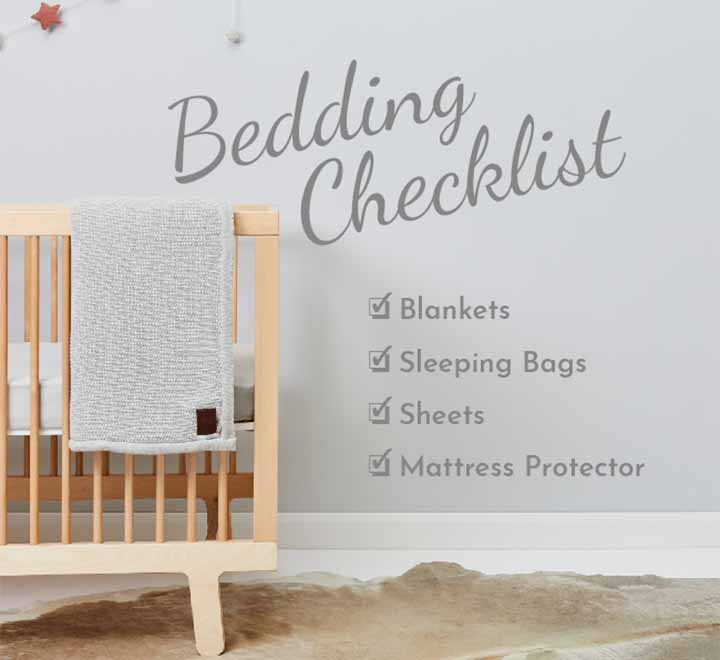
Having the right bedtime set-up is vital, as is developing a good bedtime routine. The specifics of the checklist will vary slightly, but the general gist remains the same whether you’re using a cot, crib or Moses basket.
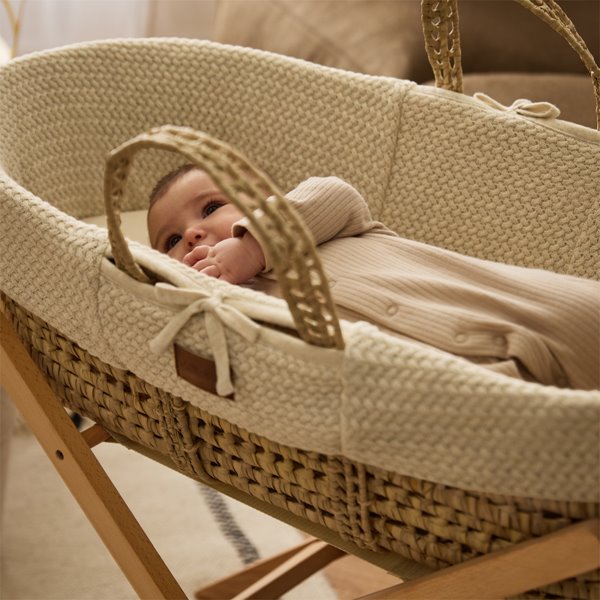
First on the list are crib and cot sheets. Choosing the best sheets for your child's crib or cot can be a little overwhelming simply because there are so many choices.
Cot and crib sheets matter for several reasons; first, they are easier to clean than a mattress which means accidents are less of a challenge to clean up, and bacteria can easily be washed away in the washing machine.
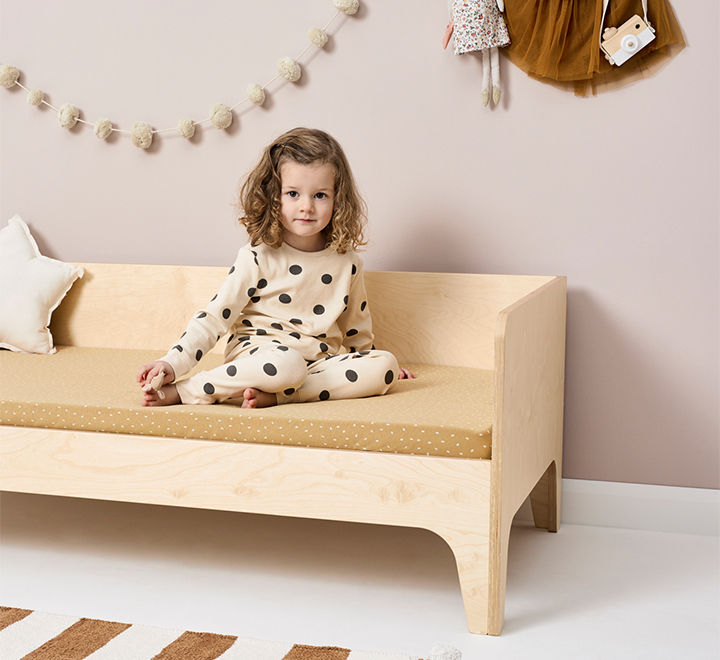
The sheets also provide a barrier protecting the mattress from dust and skin cells. Babies often have sensitive skin, and the sheets tend to be gentler and offsets the risks of skin irritations.
Obviously, you need to get the right size sheet for the setup you’re using. If the sheet doesn't fit properly, it can be a hazard to your baby, which is why getting the right size is important; you need to ensure that you can secure the sheet properly.
Depending on where you purchase the mattress, you are likely to find that they also have sheets to fit the mattress. Otherwise, you can read the dimensions of the mattress on the tag or measure beforehand to ensure that any sheets you buy will fit the mattress.
Baby bed sheets come in a few different materials, but one is arguably better than the rest. As mentioned above, babies have incredibly delicate skin, which is why the material of the crib and cot sheets matter so much.
In our experience, the best material for baby bedding is natural, organic fibres like linen and cotton. It is breathable, lightweight, and amazingly soft. Synthetic materials are harsher and more abrasive on a baby's skin, so they should be avoided.
Babies sleep an awful lot, and because they spend so much time in their beds, it’s important that their bed is clean and germ and bacteria-free. Cleaning your baby's bed sheets thoroughly is vital not only for your baby's health but also for the longevity of the sheets themselves.
All of our sheets come with washing instructions to make washing sheets that little bit easier! Most of the time, a hotter wash is better for killing germs. You should aim to wash the sheets once a week and ensure they are completely dry before folding or putting them away.
Baby bed sheets have a number of pros and cons. They protect your baby's mattresses from dirt and damage. They are softer on your baby's skin and provide a cleaner barrier for your baby to sleep on. However, they do need washing regularly – even more so if your baby has an accident on them which does often mean that you need several sets.
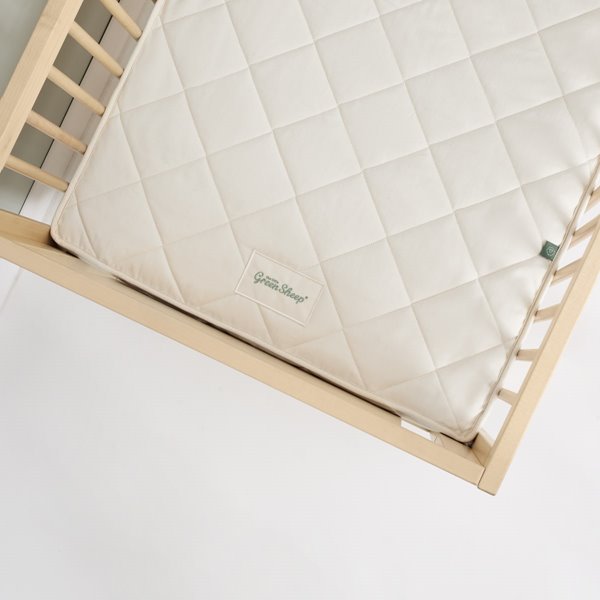
Next on the list is a baby mattress protector, which is self-explanatory. They are another baby bedding essential and, like the sheets, serve as another layer to protect the mattress from damage, spills and leakages.
Ideally, you’ll have three to four to hand because the likelihood is that they will also need cleaning regularly. Any accidents will not penetrate the mattress itself, which ultimately means less cleaning and washing! Mattress protectors also tend to be waterproof, which means they aren't as easily stained.
Getting the right size mattress protector matters. It needs to fit the mattress properly in order to protect it. An ill-fitting mattress protector won't be effective in keeping out leakages or other accidents.
Luckily, as with the sheets, if you are purchasing your mattress protector from the same place as your mattress, it should be pretty easy to find ones that are the right size. Otherwise, you simply need to know the dimensions of the mattress, which should have been made clear when purchasing, or, if not, you can simply measure the mattress yourself.
As mentioned above, most mattress protectors for babies should be waterproof, but this doesn't mean that they have to be made of a plasticky, crackly material that is as uncomfortable as it is irritating.
The Little Green Sheep's mattress protector has a 100% cotton exterior to ensure that your baby is comfortable. The interior is made up of an Oeko-Tex or polyurethane membrane that is completely waterproof to ensure that nothing can penetrate the protector and make it through to the mattress itself.
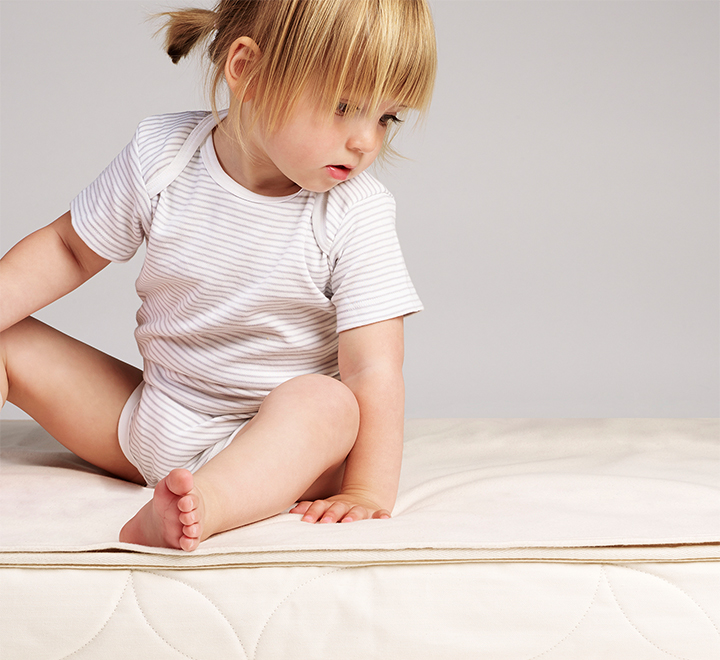
The mattress protector shouldn't need washing as often as the bedsheets – unless, of course, your baby has had an accident that has gone through the bedsheets to reach the protector. This doesn't mean that it doesn't need caring for.
Most of the time, the mattress protector should come with care instructions, either on the packaging or a small label on the protector itself. By and large, they will be machine washable, some will be tumble dryer safe, and others will need air drying.
Most people will have a mattress protector on their beds, and babies arguably need them more. They keep the mattress clean; they stop bacteria from reaching the mattress and any bacteria in the mattress from reaching your baby.
They can also make the mattress more comfortable for your baby too. However, they often aren't fitted, being more akin to a mattress topper which means they need to be used with sheets, and you also need to buy several because they will need regular washing too.
The next item on the list is baby blankets. Baby blankets are another essential item to ensure that your baby is comfortable in their bed. In fact, baby blankets aren't simply for your baby's physical comfort; they can also speak to their emotional comfort too.
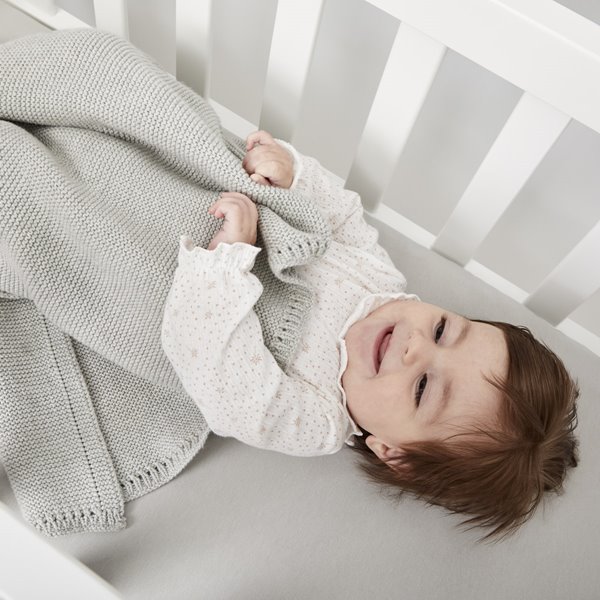
It is incredibly common for people to keep their baby blankets long into adulthood – hence the term security blanket. The blankets themselves are often far more versatile than other items on the list because they can be used inside the house and out.
The right blanket should be both warm and breathable. Your baby should be insulated year-round without worrying about them overheating. You also need to consider how the blanket is going to be used. Infants should ideally be swaddled in their cots because loose blankets can be hazardous, but on the go, you will want a blanket that can lay over them in a pram or car seat.
A cotton or knitted blanket is ideal; you might also choose to buy a fleece-lined blanket for use outdoors in the winter, as well as lighter muslins for use in the summer months. The most important thing is that the material is breathable and lightweight.
Blankets are not immune to spillages, accidents and damage. Therefore, they are going to need to be washed. Most baby blankets will be machine washable, although depending on the material, they might have different heat requirements. Some of them might need washing in cooler temperatures versus other baby blankets.
In addition to the washing instructions, not all blankets will be tumble dryer compatible; some of them will need to be air-dried. This should all be made clear on the packaging or on the tag of the baby blanket itself.
Baby blankets can provide your baby with a feeling of safety and security, not to mention ensuring that your baby is comfortable and warm too. They are also versatile with uses inside and outside the home. That being said, you might find a blanket surplus to needs if you go with one of the other options like a baby sleeping bag or duvet.
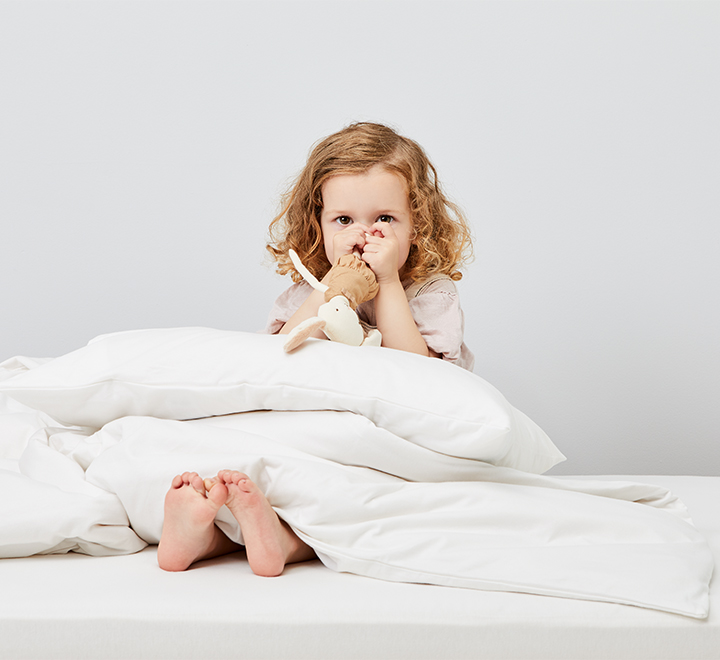
Pillows are for toddlers or ages one and up, and so they will become more important once your baby gets older.
Duvets should be thought of similarly. A baby should not have a duvet until it reaches the age of around twelve months. Although they will be essential, so it is worth learning more about them now.
There are several forms of baby duvets - almost as many as there are full-size duvets. This is because toddlers can better regulate their temperature than babies and so duvets can be used more safely.
When it comes to choosing the type of duvet, the choice really is up to you. Take into account any allergies that your child might have, and go for lighter togs in the summer. You should also consider choosing a more easily washable duvet because toddlers aren't immune to night-time accidents either.
Picking the perfect duvet for your toddler means thinking about their bedroom set-up. Are they still in a cot or crib, or are you going to graduate them to a bed? This matters because the size of their bed will determine the size of the duvet.
You might simply need a single or a double duvet, depending on the size of the bed. However, if the bed is specifically designed for children and smaller than the standard, it is worth taking the measurements into account so that the duvet will fit properly.
Not all duvets and pillows are easy to wash, depending on what material it is made of. This is why you should, at this stage of your child's life, opt for a material that is more easily cleaned, like cotton and wool.
If you have chosen a duvet or pillow made from cotton and wool, then you can wash them in the washing machine; it does usually need to be on a cooler wash. They tend to need to be air-dried and aren't compatible with a tumble drier. However, they should have care instructions on them that you can consult if you aren't sure.
A duvet and a pillow are how most people sleep and so introducing them at the right time is often seen as an important developmental milestone. They are more accessible and often more comfortable, especially as they progress from a cot to a bed. However, they are dangerous for children below the age of one.
The final item on the list is baby sleeping bags. These are often used instead of blankets or duvets, especially in infancy. There is no loose material that could potentially be hazardous to your baby, and it offers an alternative to being swaddled.
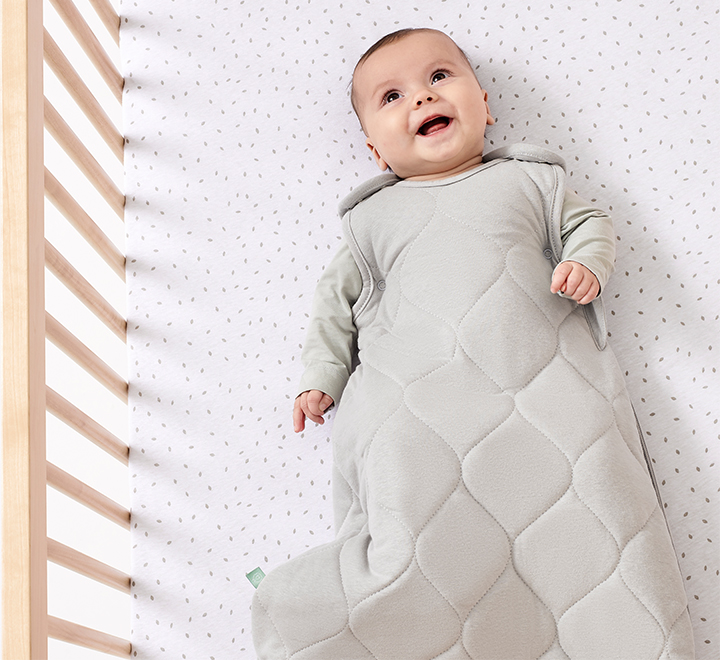
Baby sleeping bags are an incredibly popular option for a lot of parents. They come in a few different togs or thicknesses; ideally, you should get a few to make sure you are covered for the winter and summer months.
When picking your sleeping bag tog, it’s important to understand that the higher the tog, the thicker the material and lining of your baby’s sleeping bag will be.
Picking out the right tog for your baby will completely depend on the climate you live in and the time of year that you’re shopping for.
With this in mind, it’s handy to have a few different sleeping bags to hand in varying sizes so you can cycle them throughout the year, along with spares to account for any night-time accidents.
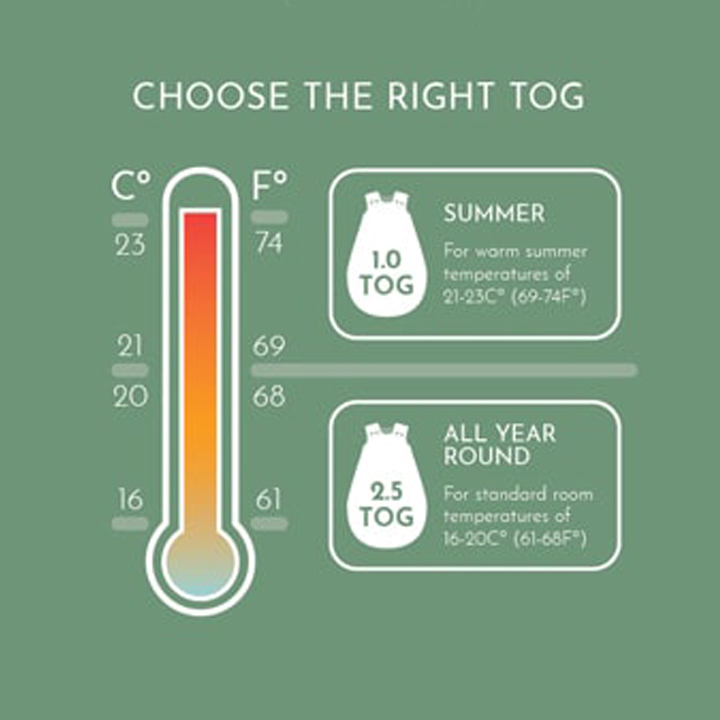
As you can see from the image guide above, the right tog for your baby will completely depend on the climate.
For a quick run-down, remember:
In their first six months, your baby should always be sleeping in the same room as you for safety reasons. Of course, it's always recommended to check in on your little one as they sleep, regardless.
If you want to check their temperature specifically, aside from gently placing a thermometer beneath their armpit, you can also place a hand delicately behind their neck to check whether they're too warm. If it feels damp or warmer than usual, consider removing layers to regulate their temperature until they're comfortable.
Babies cannot regulate their temperature as well as adults can. A baby sleeping bagkeeps your baby at a consistent temperature throughout the night while still allowing them to have enough wiggle room and not restricting their movement in the same way that swaddling does.
The togs start at 1.0 and go to 2.5 togs; the lower togs are designed for the summer months, with the higher togs being for the winter. Of course, you need to consider the temperature of the room your baby is sleeping in too, because babies – especially newborns – are prone to overheating.
Sleeping bags should be cared for in a similar way to the other items on the list. They need to be cleaned regularly. This means at least once a week or more if they get dirty sooner, which is why it makes sense to have more than one.
You should wash them before first use and they can usually be washed on a standard setting. However, they aren't always able to be tumble dried, which is something that you should check on the label or packaging itself.
Baby sleeping bags are a great option. They keep your little one safe and warm without the possibility of loose blankets, which can be a hazard for your baby. They are also far less restrictive, allowing your baby to move freely as they sleep. That being said, sleeping bags do offer their own hazards, so be sure to read the warnings before purchasing.
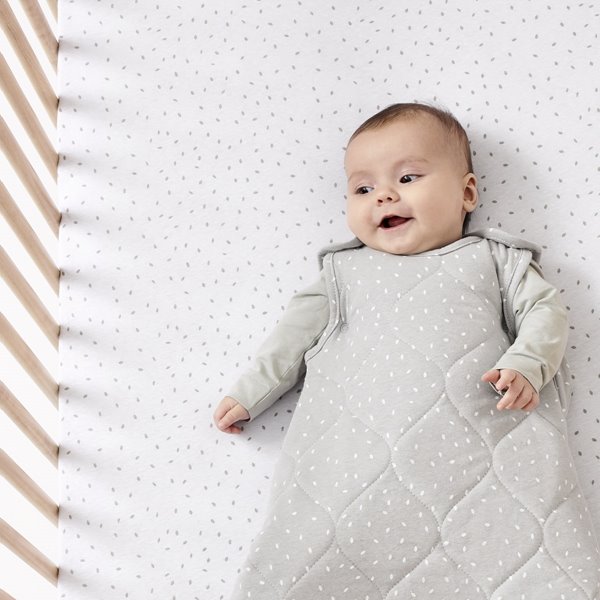
Firstly, as mentioned above, you should not use a pillow or a duvet for a child under the age of one; this is because they pose a suffocation risk before that. Infants under that age can't push off the duvet.
You should also ensure that your baby is sleeping on their back. If you choose to use a blanket, it should be tucked under the mattress on their mid-chest with their arms over the top. A baby sleeping bag or swaddling your child does mitigate these risks somewhat. Once your child gets a little older and can crawl or stand, you should remove all toys and bumpers from their cot or crib because they can climb on them and fall out of their cot.
There are several things that can pose a risk to your baby in their cot or crib. Most of the time, this is because they pose a suffocation risk like loose blankets or heavy, bulky bedding. In addition, your child needs to be secure in their cot; this means a sleeping bag, swaddling or tucked-in blankets.
The other half of the list covers hazards that they will experience as they grow up. For example, bumpers and toys can be used to climb on and subsequently lead to falls out of the crib. They can also allow your child to reach their mobile, which then presents a choking hazard.
All parents want the best for their children. However, babies are so fragile that it can be daunting to try and think about all of the risks to your child and what you need to do to keep them safe.
Your baby's bedding directly speaks to how comfortable and safe they are going to be at night. The above guide should consist of everything you need to know about how to make sure your baby is happy and secure in their bed.
This depends on the type of mattress protector that you have. Depending on the material they are made of, they aren't always comfortable for your baby. Some of them are comfortable enough for your baby to sleep on, but a sheet simply adds an extra layer of comfort, and if your mattress protector isn't fitted, it helps keep things secure.
Babies can have a pillow and a duvet from the age of twelve months. Although most parents tend to wait until they are transitioning them from a cot to a bed to introduce this.